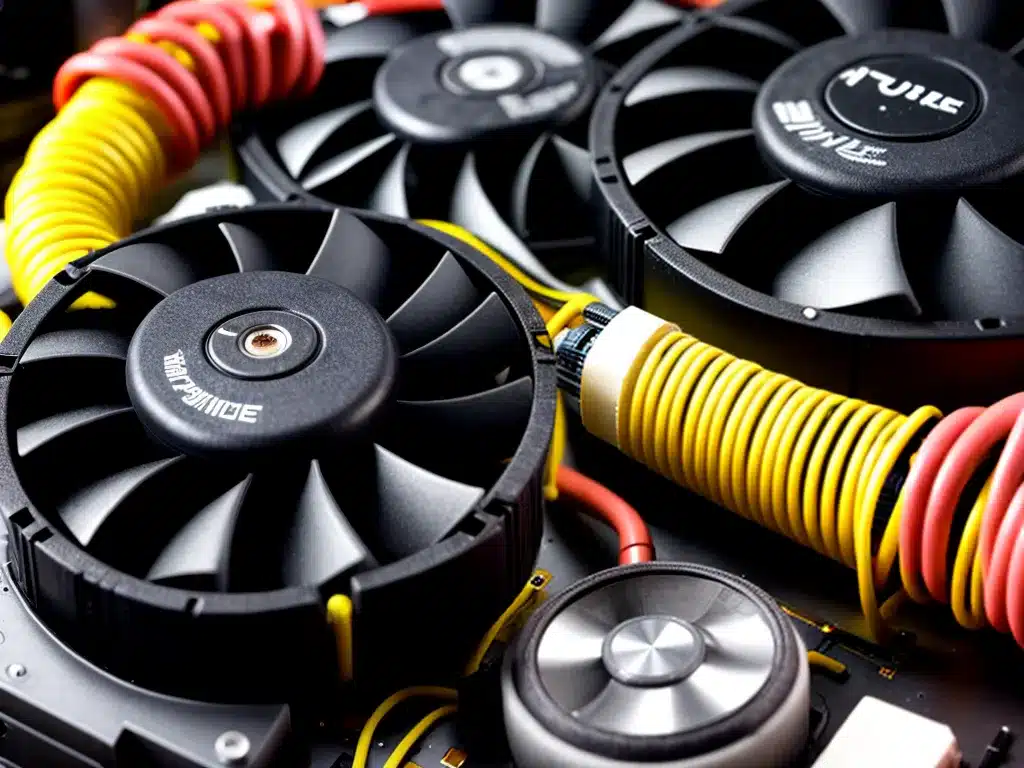What is Coil Whine?
Coil whine is a high-pitched noise that emanates from electronic components like power supplies, graphics cards, and motherboards. It is caused by vibrations in the coils of inductors and transformers when power passes through them. The noise varies in pitch from a faint squeal to a loud screech depending on factors like the load on the component.
Coil whine occurs when the core of an inductor or transformer physically vibrates against the windings. This vibration creates audible noise as the pitch changes with the electrical fluctuation. It often manifests when components are drawing a lot of power.
Common Causes of Coil Whine
There are a few key reasons why you may be experiencing annoying coil whine from your PC:
High System Load
Running demanding applications like games or rendering software places your graphics card or PSU under heavy load. This strains the inductors and transformers, making them vibrate excessively. Coil whine worsens with higher frame rates in games when the GPU is working harder.
High FPS Rates
If a game or benchmark pushes your GPU to render very high frame rates exceeding your monitor’s refresh rate, it can induce coil whine. The GPU keeps working harder beyond what is displayed on-screen. Limiting the frame rate with VSync or FPS caps can help reduce the whine.
Power Supply Overhead
Using a PSU with much higher wattage capacity than your system needs can also cause coil whine. When the PSU is loaded below 20% of its max capacity, it becomes less efficient and voltage regulation suffers. Aim for ~50% load on your PSU.
Certain Hardware Models
Some graphics cards or PSU models are simply more prone to coil whine based on their internal design and components used. It’s not necessarily indicative of a defect. Reviews can identify problem models.
Fixes and Mitigations for Coil Whine
Here are some solutions you can try to eliminate or reduce annoying coil whine:
Limit Frame Rates
If your GPU is outputting very high FPS beyond your monitor’s refresh rate, enable VSync or an FPS limiter in games and apps. This reduces unnecessary rendering workload.
Undervolt the GPU
Lowering your GPU’s voltage via voltage/frequency curve optimisation in tools like MSI Afterburner can help reduce coil whine. This decreases power load and strain on the inductors.
Use FPS Limiter Software
Tools like RTSS allow limiting frame rates system-wide or per application profile. Set this to your monitor’s refresh rate.
Try a Higher Wattage PSU
Using a PSU with extra headroom compared to your system’s power draw keeps the unit operating in its sweet spot, reducing coil whine.
RMA the Hardware
If coil whine persists, consider RMAing the graphics card or PSU if it’s under warranty. Manufacturers may replace the faulty component.
Add Padding/Dampening
Adding adhesive foam pads or silicone dampeners to the coils can mechanically isolate and reduce vibrations. Open the GPU shroud to access the coils.
EMI Shielding
Adhesive copper tape applied to the coils blocks electromagnetic interference that induces vibration. Open the card carefully to tape the coils.
My Experience Fixing GPU Coil Whine
I recently ran into annoying coil whine from my new RTX 3080 GPU under heavy gaming loads. The high-pitched noise was very distracting.
Here’s what worked for me in eliminating the whine:
-
I first limited the frame rate to my monitor’s 144Hz refresh rate via RTSS. This prevented excessive FPS from straining the card.
-
Using MSI Afterburner, I also undervolted the GPU core and memory clocks. This reduced power load and temperatures.
-
These steps alone lowered the whine by around 50%. To further improve it, I opened up the GPU shroud and added small foam dampening pads on the chokes around the GPU chip.
-
Finally, I also applied copper EMI tape to the noisy inductors and transformers. This electrically shields them.
The combination of these mitigations finally silenced the irritating coil whine from my RTX 3080. My GPU now runs quietly even under heavy gaming loads. With some DIY damping and EMI shielding, you can fix annoying coil whine problems too!













